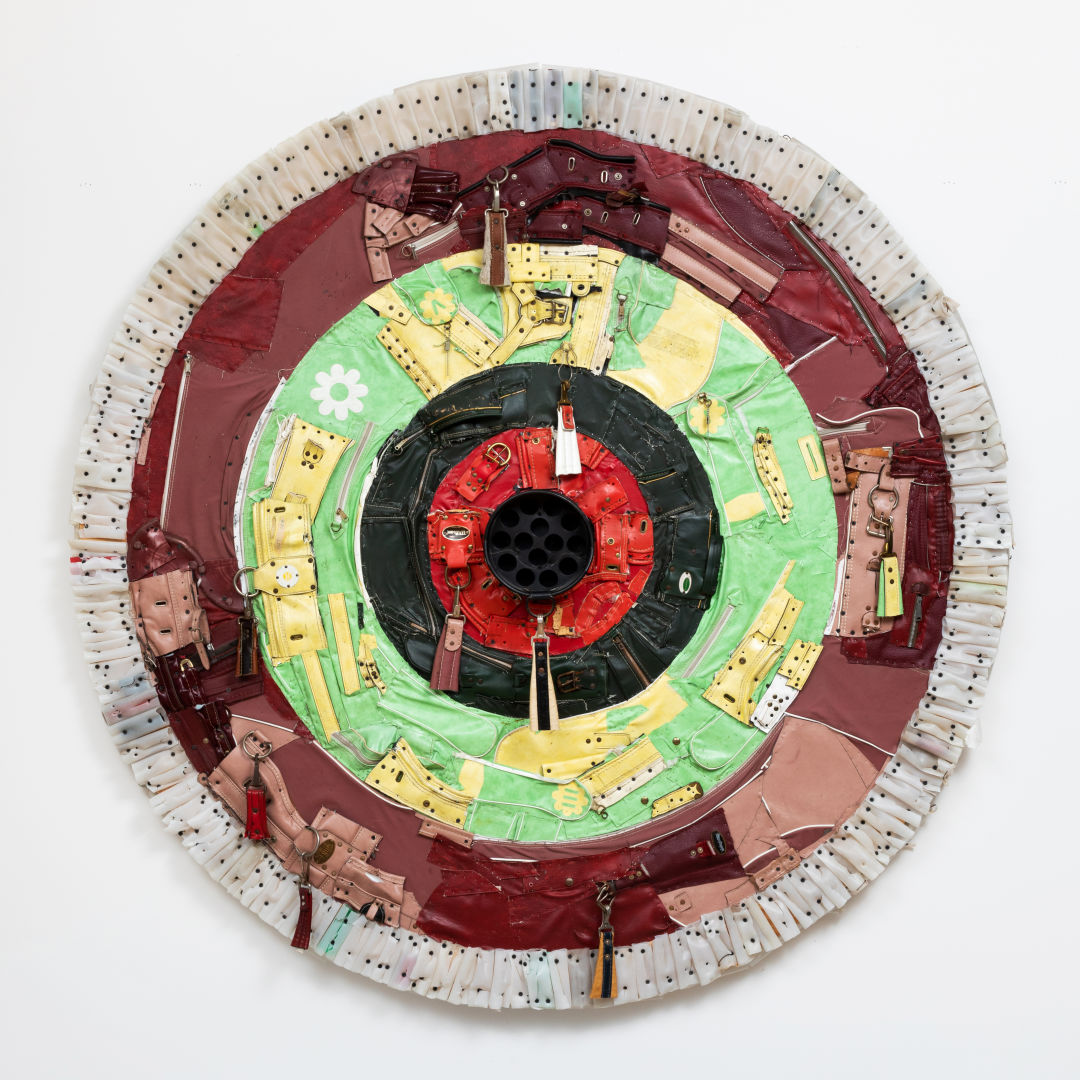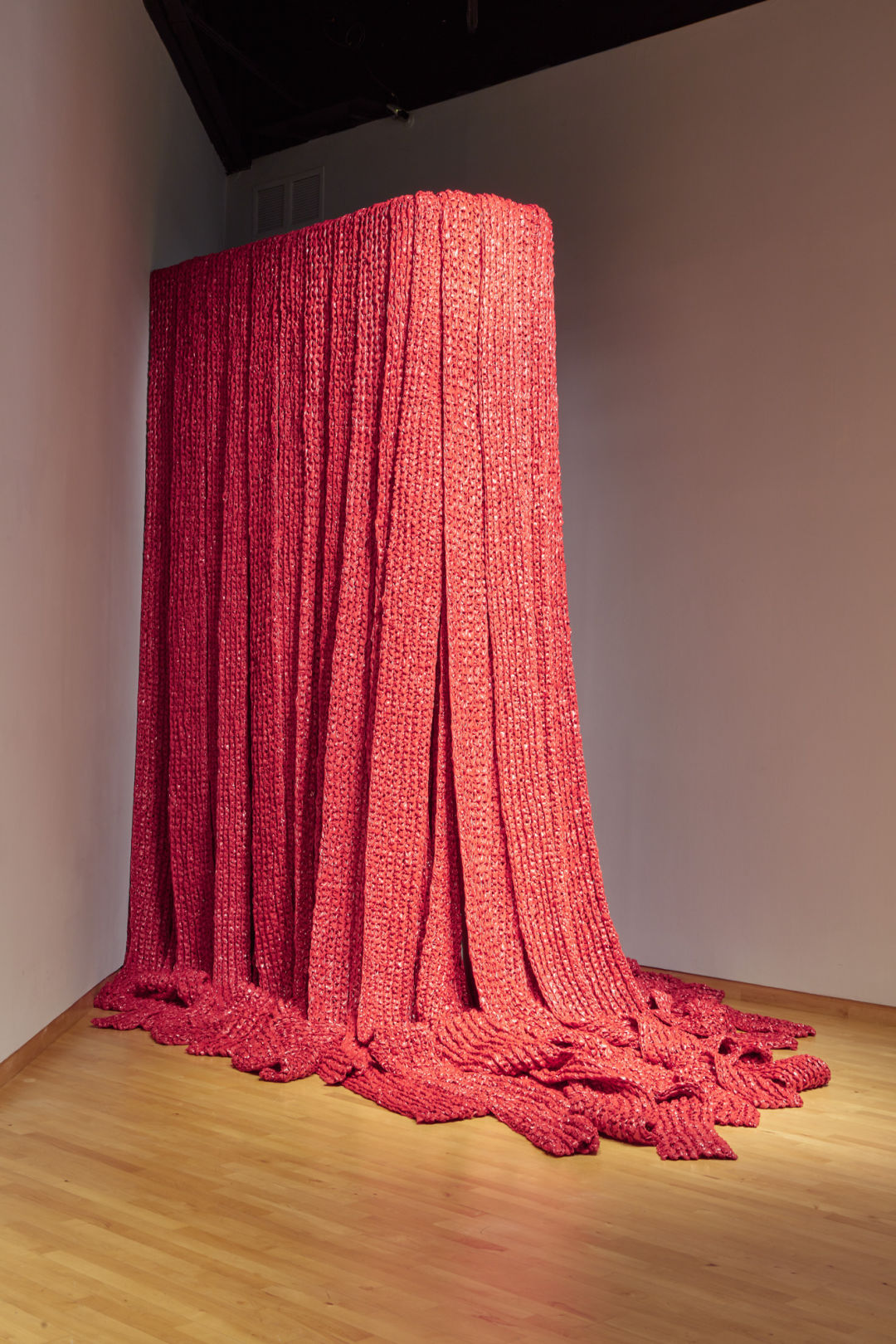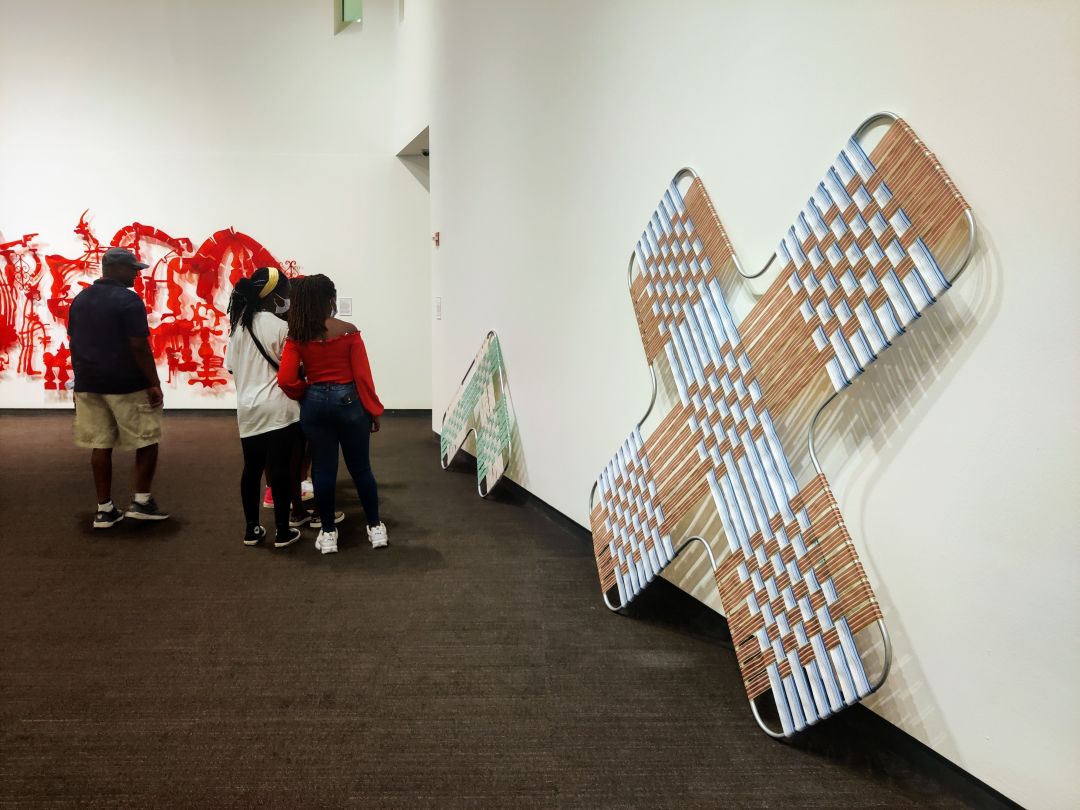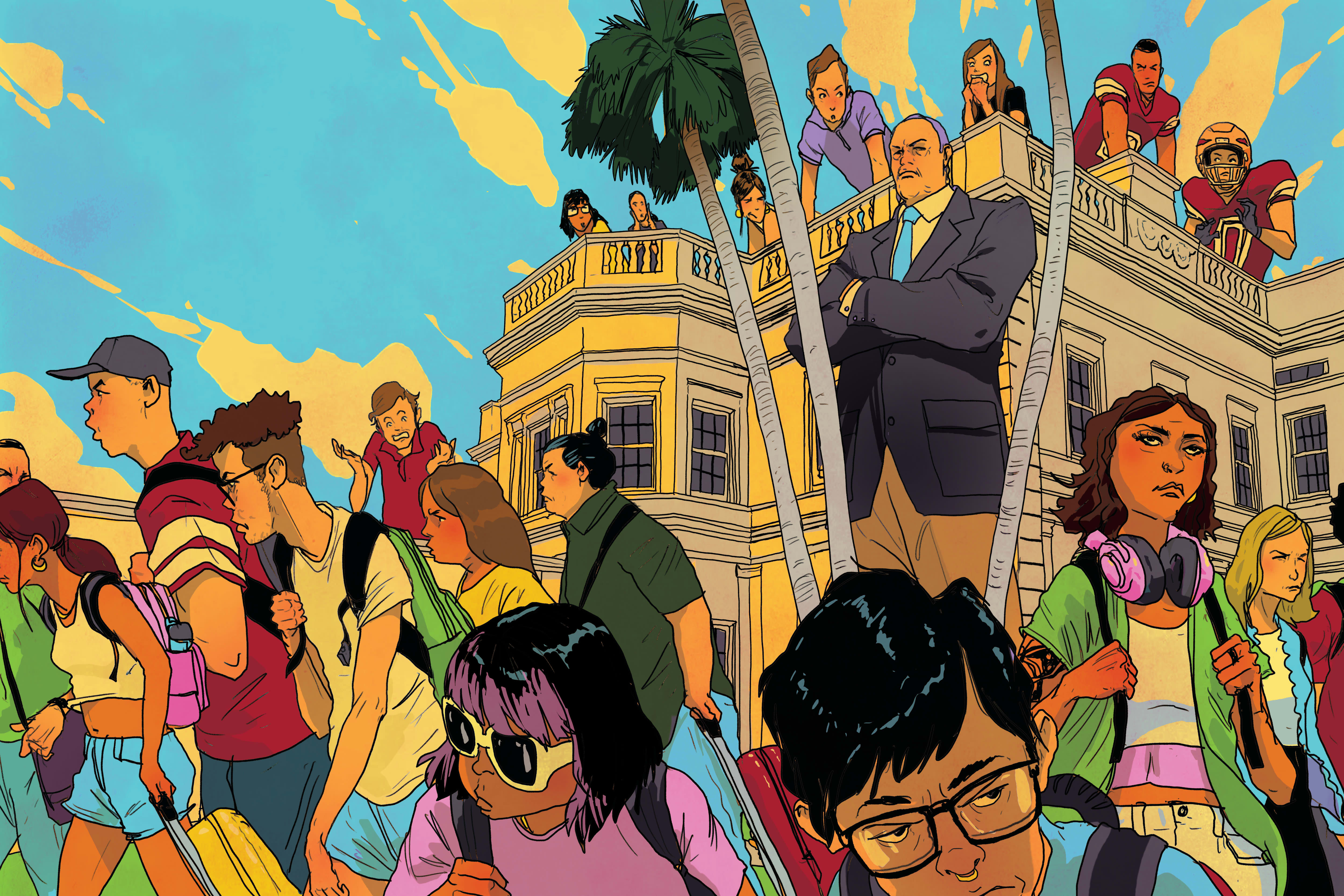In New Local Exhibits, Three Artists Uncover Layers of Meaning in the Everyday
Say you’re rummaging about in the garage. You see an old aluminum lawn chair in one corner. A battered old golf bag in another. Maybe some plastic trashcan liners in a box on the shelf.
Just your basic Florida stuff, right?
But in works by three artists now on view in area museums, these ordinary objects are the stuff of art, stirring fresh and at times uncomfortable associations.
The artists—the late Charles McGill (subject of a retrospective at the Sarasota Art Museum), Akiko Kotani and Matthew Drennan Wicks (both featured in the four-museum Skyway exhibition)—operate at the intersection of art, craft and manual labor, uncovering layers of meaning in the everyday.
Charles McGill: In the Rough

Summertime by Charles McGill
Image: Courtesy Photo
Through Nov. 11, Sarasota Art Museum, 1001 S. Tamiami Trail, (941) 309-4300, sarasotaartmuseum.org
“It’s a tug of war, it’s a wrestling match… and I really would not have it any other way.” That’s how Charles McGill once described his use of golf bags as a medium.
The struggle is apparent in the exhibition now at SAM. McGill (1964-2017) didn’t merely deconstruct golf bags to create his sculptures; he ripped them into shreds, wrenched them into twisted shapes that suggest Klan hoods, covered them in collages of lynchings. McGill, a classically trained African American artist exploring issues of race and representation, also happened to love, play and teach golf. The sport, with its legacy of country club exclusivity (read: discrimination), provided him fertile territory for both sardonic commentary and viscerally affecting art.
As guest curator Joe Lewis suggests in his notes on In the Rough, McGill’s appropriation of golf paraphernalia progressed through stages, beginning with Cover—those none-too-subtle collaged bags, as well as performative events in which McGill, dressed in stereotypically golf-y argyle knickers, teed off in Harlem. The hooded golf clubs refigured as “Klan marauders” are part of what Lewis identifies as McGill’s Reveal period, followed by Evolve, in which the more overt political messaging transitions into what McGill called “painting-informed assemblage”—a golf bag shredded into strips, the bullseye-like Summertime. In this, McGill’s most mature period, the work resists easy interpretation, yet still makes a forceful aesthetic impact.
Nothing is easy about McGill’s art. But as the artist said in the interview quoted above (a must-watch video on the SAM site), “If the material were easier to handle I don’t know if I’d get the same result… I don’t want serenity.”
Akiko Kotani: Red Falls

Red Falls by Akiko Kotani
Image: Courtesy Photo
Through Sept. 1 as part of Skyway: A Contemporary Collaboration 20/21, USF Contemporary Art Museum, 4202 E. Fowler Ave., Tampa, (813) 974-2849, cam.usf.edu.
Dramatically situated in a corner of USFCAM’s galleries, Akiko Kotani’s voluptuous, voluminous Red Falls cascades 12 feet from the ceiling, puddling gracefully on the floor like a giantess’s ball gown. On closer inspection, you see that the whole thing has been crocheted, like Grandma’s afghan.
But while the material may look a bit like sparkly woolen yarn, it’s not. It’s made of thread created from trash bags: shiny red polypropylene crocheted into 28 panels by Kotani, each panel taking approximately a week to finish.
Sounds painstaking, and it is. Kotani uses a giant crochet hook, she says, so the process is not all that difficult—just time-consuming. But the act of crocheting is central.
The piece is “a glorification of women’s work,” she says, paying homage to the quiet acts of domesticity that are vital to households but rarely acknowledged. She wants to transcend the dismissive cliche of an auntie in the corner crocheting away “to show that women can also do work like this—very large, very complex.”
And powerful. In her previous works using crochet—like Soft Walls, which she created for the first Skyway exhibition in 2017—the scale was grand but the impact was more ethereal, perhaps because she used white polypropylene. Here, the red packs a wallop, evoking the flow of blood—particularly menstrual blood, which is frowned upon in many cultures, says Kotani, because of its association with procreation, “which gives women a certain power” over men.
But the ultimate power of the work resides in the material itself. The trash bags are emblematic of both disregard and resilience—“a woman’s resilience to all the things that are thrown at her in a society.”
Matthew Drennan Wicks: The Stretcher Series

Pieces by Matthew Drennan Wicks at the Museum of Fine Arts
Image: Courtesy Photo
Through Aug. 22 as part of Skyway: A Contemporary Collaboration 20/21, Museum of Fine Arts, 255 Beach Drive NE, St. Petersburg, (727) 896-2667, mfastpete.org.
The craftsmanship is uncanny.
The multi-colored plastic webbing and curved steel frames immediately recall the mass-produced, machine-made lawn chairs of yore, but these are not chairs. They’re flat, sculptural objects leaning against a gallery wall. And machines didn’t make them; artist Matthew Drennan Wicks did.
“My original idea was to actually source real lawn chairs and dismantle them,” he says. But that didn’t sit right, so he bought vintage re-webbing kits on eBay and taught himself how to bend steel tubing the way electricians do, with a pipe-bending tool.
Wicks, trained as a ceramicist, is interested in “presenting familiar objects in unfamiliar ways… looking at the functional object but interfering with the function.” (In the first Skyway exhibition, at the Ringling in 2017, he showed a full-size ceramic laundry basket.)
“The beautiful curves in the lawn chair were designed so the chair wouldn’t sink into the sand,” he observes. When the chair is divorced from that function, we’re free to focus on the curves, which Wicks remakes into shapes related to the body: for instance, an L that suggests the way the body hinges at the waist. The webbing comes into greater focus, too; the over-under, under-over patterns are suggestive both of weaving traditions and the intersecting blocks of color in a Mondrian.
Wicks is a New Orleans native who lived for many years in the Pacific Northwest before getting his graduate degree at USF, where he now teaches. While he initially noticed a change in the color palette of his artwork after he moved here, he says the Stretcher series may be “the most Florida thing I’ve ever made.”



